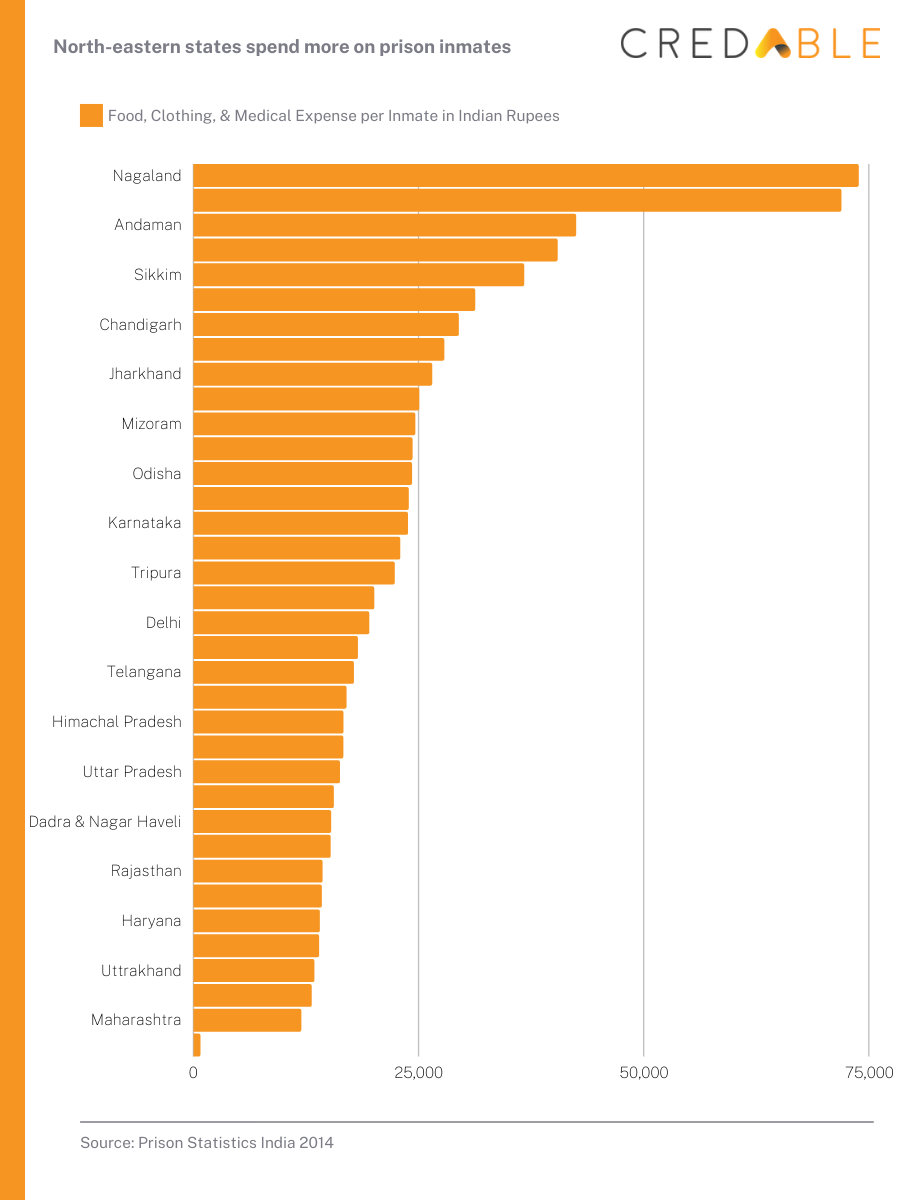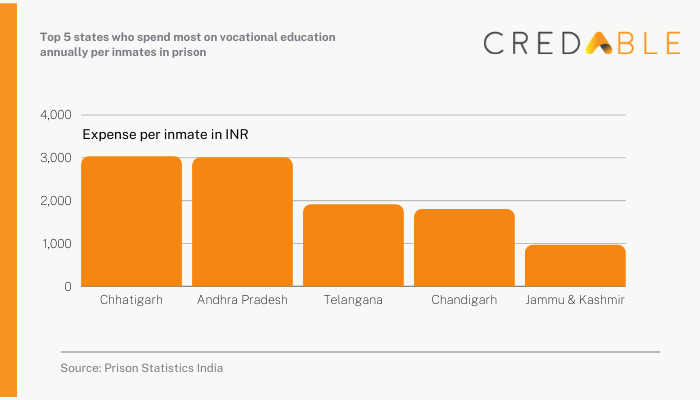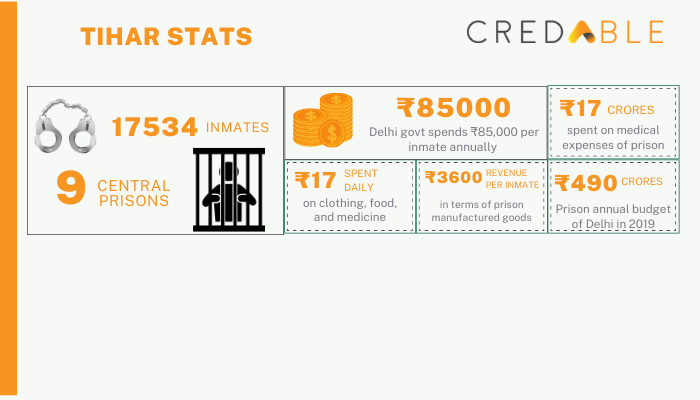The Economics of Tihar Jail
Remember, the Bollywood movie where the criminal was relieved with the thought that he would enjoy at least ‘Do Waqt ka Roti’ in jail. Well, it still stands true even in today’s time. Although the prisoners receive two meals per day, have a roof over their head, and clothes to wear, still, the conditions in Indian prisons remain grim when compared to the prison environment in Sweden or Denmark.
The Indian counterparts are overcrowded, with less infrastructure in place and limited resources, financials always turn out to be a major concern. Therefore, it won’t really hurt to delve deep into the finances and working capital management of one such massive Indian jail – Tihar jail.
Let’s get started!
Prisons of India – What’s the state of it?
Prisons in India are governed by the Prisons Act of 1894 that draws its origin as a recommended law from “Prison Discipline Committee.” This recommendation was made in 1836 by Lord Macaulay, who soon followed it with the constitution of four jail commissions that would eventually help to review the established system from time to time. However, the law is still full of prejudices and doesn’t include any form of reform that would help the prisoners to rehabilitate and easily transition into a life of freedom.

All prison institutions need huge financial backing to continue functioning. Right from formulating a rehabilitation program, to funding the regular food, welfare activities, etc., for every inmate, adequate funds is a big-time prerequisite. In India, budgets are allocated to prison jails and then distributed accordingly based on its needs, number, and the type of jail. Even various welfare activities and programs also ensure to raise money which is later used in parts to fund other activities and staff!
Tihar Jail Factory – a multi million dollar brand
Tihar Jail runs its own brand called TJ’s that makes jewelry to detergents. TJ’s is nearly a decade old and distributes all over India with an estimated annual turnover of over 5 million dollars. This adds as a vital revenue stream for functioning of Tihar Jail. The carpentry unit of brand TJs contributes to over 65% of their revenues. There is a high probability that if you are sitting on a sofa in a government building in Delhi, it was handcrafted inside Tihar Jail.
Tihar jail is run by the Department of Delhi Prisons, Government of Delhi. The correctional institution consists of nine central prisons. It also runs its own prison industry where the inmates work and make goods under the brand Tihar. A report on December 2019, the jail has around 17,534 inmates against the normal capacity of 10,026. Besides, it is understaffed and the budget often runs out of the expected budget!

Sneak Peak on the Prison Budget
With the prison budget being a huge prerequisite, these correctional facilities heavily rely on them. From building a solid infrastructure to accommodate more inmates, to adding a welfare budget, a lot depends on this. As per 2019, the sanctioned budget stood at 2019-20 (`6,818.1 crores), which shot up by 12.3% in comparison to the year 2018- 19 (`6,068.7 crores). While the allocated annual prison budget was the highest for Uttar Pradesh (`1165.6 crores), the state of Delhi received `490.4 crores. Here’s a breakdown of how Delhi’s sanctioned budget looks like:
Expenditure: While the expenses of day-to-day activities, the salary of staff comes under non-planned expenses, the expenditure on specific planned activities under a Five Year Plan is called planned expenditure. Delhi’s expenses stand at `467.5 crores, a little short of the total sanctioned budget where almost 66.23% of its share is spent on prison inmates. The Delhi Government spends around ₹ 85,000 annually per inmate, which is the most compared to the other states.
Different state prisons report having to spend on food, healthcare, and welfare. But, the state of Delhi has spent the highest on medical expenses (16.98 crores), and on other expenses (`260.12 crores) during 2019-20, almost a lot more than other states. Besides, Delhi stands nowhere near to what other states like Chhattisgarh, Andhra Pradesh, Odisha, and Telangana spend on vocational activities to keep educating the inmates.

There has also been a 275% surge in the prison income from 2001. In the last year, the prison sales across India stood at ₹ 3,600 per inmate. The overall increased expenditure on vocational/education and welfare have certainly come-in handy. However, these funds are not routed back to the prison but are invested back to running these industries. However, the share of funds also depends on the state policies. For instance, Tamil Nadu shares 20% of the total income with the prisoner, while the other 20% goes to the Prison Staff Fund and the rest is invested back to the manufacturing of the goods.
Prison Infrastructure: Many Measures have been taken to improve these correctional facilities’ infrastructure that has a significant impact on inmates. Some of the important initiatives include improving constructing more jail structures, renovating structures, providing quarters to jail staff, upgrading electronic gadgets, vehicles, and digital tools like video conferencing among others. Among all the states, Delhi is said to have only 16 VC facility when compared to Madhya Pradesh who have 111 VC facility. Moreover, around 14 jails were renovated under the sanctioned budget.
The next set of graphs would showcase how the sanctioned budget is distributed across states and facilities.
At large, the Prison Statistics of India suggests that the Indian state spends around ₹ 51 per inmate daily on clothing, food, and medicine. But, it might look twisted when compared to the government’s own poverty line that holds a budget of ₹ 47 per day per person in urban areas and ₹ 32 per day per person in rural areas.
Are Jails Equipped with Enough Staff?
Most of the jails are suffering from a severe staff crunch as most of the prison officials remain vacant. A whopping 33% of the prison official positions and 36% of supervising officer positions remain unfulfilled. Delhi’s Tihar jail ranks third when it comes to staff shortage. Besides, Delhi is deemed as one of the most overcrowded jails and does suffer a severe shortage of prison guards and senior supervisory staff.
The absence of prison staff can also lead to rampant violence and other criminal activities inside the jails. There have been several incidents reported across news media where several prisoners have attempted or fled prisons. There have also been reports of death. In 2019-20, 1,584 prisoners died in jails, among which 1,469 had natural deaths but the remaining of 115 deaths were attributed to unnatural deaths. Even suicides and murders are common, and about nine of such murders took place in jails in Delhi.
To Sum Up,
Overall, the Indian prisons need rapid improvements such as to not only improve the quality of prison life for inmates, but also the prison infrastructure.
With initiatives such as TJs which adds to revenue streams, it is vital for institutions such as jail authorities as well to regulate their cash flows so that quality and output of jails can drastically improve.
Think Working Capital! Think CredAble…
Data as taken from: https://ncrb.gov.in/sites/default/files/PSI-2019-27-08-2020.pdf
